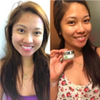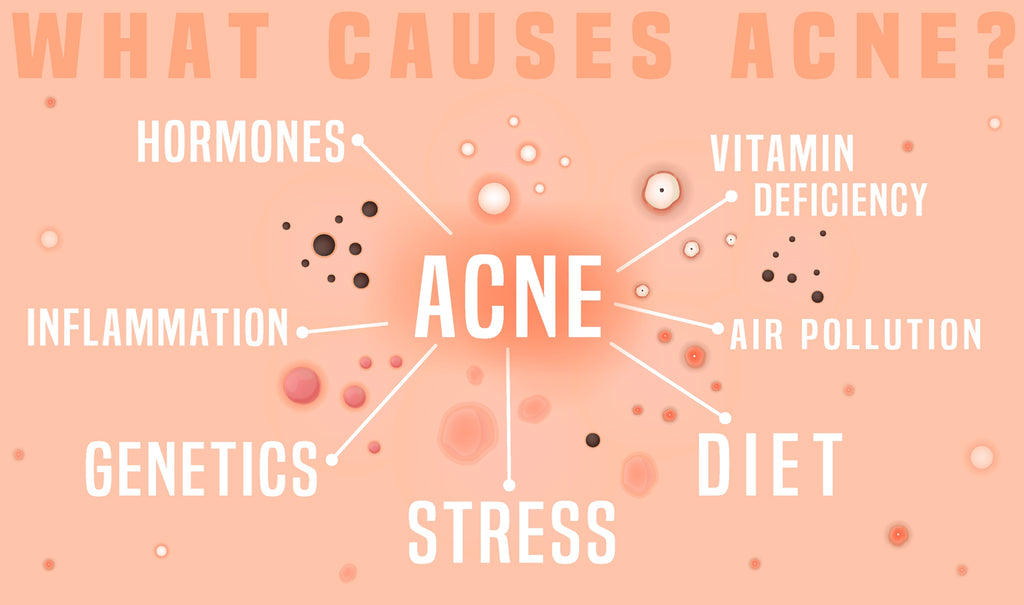For those of us who have trouble with our skin, the word “acne” can be a loaded term. We all know what it is and how it feels to deal with it, but we also know that every person experiences this skin condition differently. The severity of our acne can vary from day to day or even hour by hour! And the type of acne we experience changes over time as well-we might not always have regular breakouts or blackheads, for example.
In order to get back on top of your skin and keep your self-confidence up, you should learn more about different types of acne and what causes them so you can recognize which type you are experiencing at any given moment and how to treat-and prevent it.

What are the types of acne?
1. Pimples are small, red bumps that are often inflamed and filled with pus. They form when the sebaceous glands in the skin become clogged with oil and dead skin cells.
2. Hormonal breakouts are caused by fluctuations in hormones, typically during puberty, menstruation, pregnancy or menopause. During these times, the male sex hormone androgen is released into the body. This hormone regulates the production of sebum (natural oil) in the skin cells, causing an increase in acne-causing bacteria.
3. Whiteheads are small bumps that are either white or yellow in color and typically appear on oily areas of the skin. Whiteheads form when a clogged pore is covered with a thin layer of dead skin cells and oil, trapping bacteria and sebum inside.
4. Blackheads occur when oil and dirt become trapped in an open comedone (blackhead), causing it to appear black rather than white or red on the surface of the skin. Blackheads often form on the nose, forehead and chin.
5. Papules are small pink bumps with no head that can appear on the neck, chest, back or face.
6. Pustules are red at the center with a white or yellow-ish “head” of pus on top
7. Cysts are large, pus-filled lumps that can be quite painful. They are often the result of severe acne breakout and can leave scars.
8. Acne rosacea is a type of acne that typically affects people with fair skin. It causes redness, bumps and pimples on the nose, cheeks, chin and forehead.

How to treat pimples, hormonal breakouts, blackheads, whiteheads and more
Now that you know a bit more about the different types of acne, let’s look at some tips on how to treat them:
1. Pimples: To treat pimples, start by washing your face twice a day with a gentle cleanser. You can also use a spot treatment containing tea tree oil to help dry out the pimple and reduce inflammation.
2. Hormonal breakouts: To treat hormonal breakouts, start by using a non-comedogenic (non-pore-clogging) moisturizer to help keep your skin from producing too much oil. You can also try using products that contain ingredients like retinoids (vitamin A derivatives), which help decrease oil production in the skin.
3. Whiteheads: To treat whiteheads, start by exfoliating your skin twice a week to clear away dead cells that are clogging pores and causing breakouts. You should also use products containing tea tree oil to help clear away bacteria and dirt.
4. Blackheads: To treat blackheads, start by using a gentle exfoliator two to three times a week to remove dead skin cells. You can also try using a product that contains charcoal, which has anti-bacterial properties. You should also avoid oil-based products, as they can make the blackhead worse.
5. Papules: To treat papules, start by applying a benzoyl peroxide cream to your skin two or three times a day. If that isn’t effective, you might try using tea tree oil as a spot treatment.
6. Pustules: To treat pustules, start by applying a benzoyl peroxide cream to your skin two or three times a day. If that isn’t effective, you might try using tea tree oil as spot treatment.
7. Cysts: To treat cysts, start by visiting your dermatologist. They will likely prescribe you an oral antibiotic to help reduce the size and inflammation of the cyst.
8. Acne rosacea: To treat acne rosacea, start by avoiding any products that contain alcohol or fragrances, as they can irritate your skin. You should also use an SPF to help protect your skin from the sun.
Tips on how to prevent acne from forming in the future
There are a few preventative measures you can take to minimize your chances of developing acne:
1. Watch what you eat
2. Avoid anything that states it contains comedogenic ingredients, like cream with lanolin, petroleum jelly and mineral oil.
3. Use products with tea tree oil
4. Don't touch or pick at your skin
5. Drink plenty of water
6. Wear sunscreen if you know you will be in the sun for any length of time
7. Keep stress in check
8. Use a clarifying face wash every night and only use gentle scrubs on your skin 3-4 times per week
In this article, we’ve explored the different types of acne and some tips on how to treat them. We also learned a few preventative measures you can take in order to minimize your chances of developing acne. We recommend starting with this 3-in-1 kit.








 Verified Purchase
Verified Purchase



